
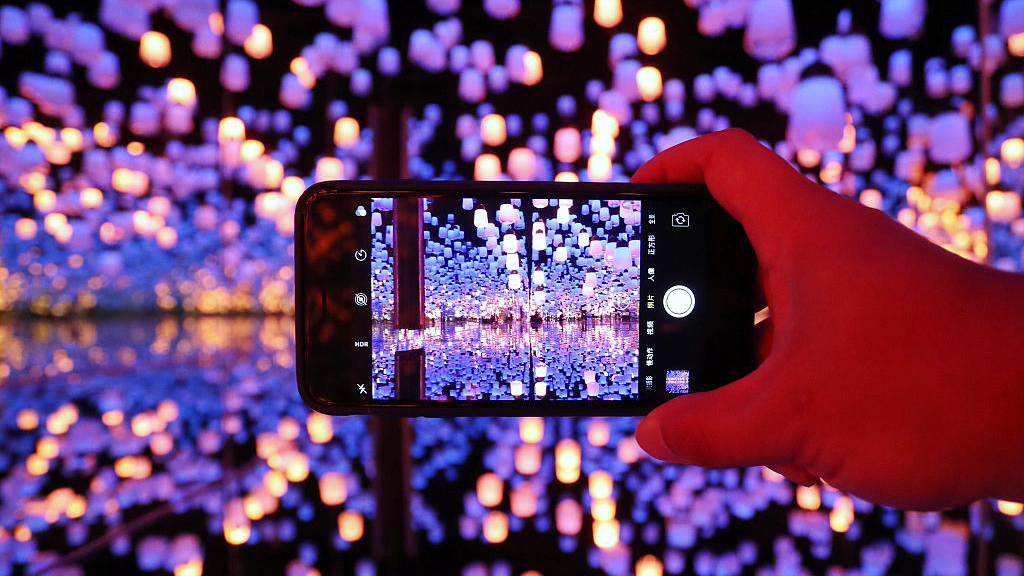
A visitor takes a picture of teamLab artwork "Forest of Resonating Lamps." /VCG Photo
Japanese tech-art collective teamLab will open its second immersive art museum in Shanghai on November 5.
Spanning 6,600 square meters, the teamLab Borderless Shanghai will showcase about 50 digital artworks under the theme of "the world without boundaries" in Shanghai's central Huangpu District. The exhibits will be moving around the space, offering visitors an experience of a "museum without a map."
The digital art hub will allow visitors to become a part of the spectacular universe of art by providing them the technology and space to interact with constantly changing light drawings and sculptures.
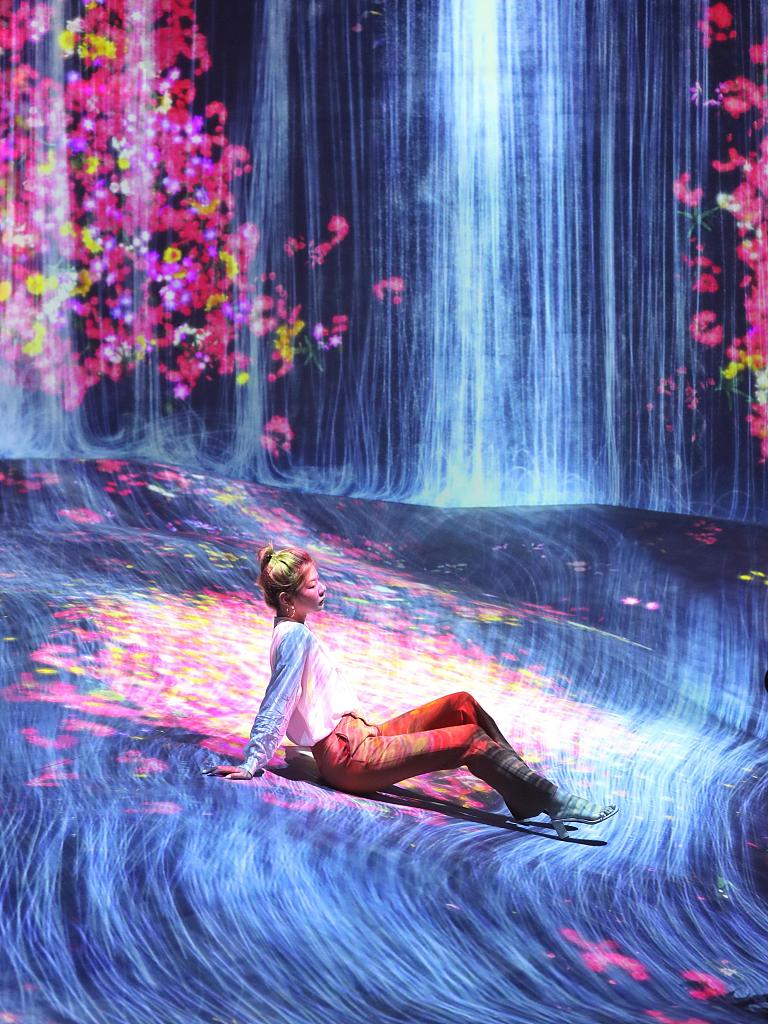
A visitor poses for a photograph at the teamLab's digital art exhibition. /VCG Photo
The museum's inaugural exhibition will include some of teamLab's famous interactive installations, such as "Forest of Resonating Lamps," which will cover 1.5 times more space than the original Tokyo version, and "Forest of Flowers and People," a space of great serenity and contentment.
Both hit digital installations were presented at a press conference on Wednesday, where it was also announced that a majority of the exhibits are making their world bow in Shanghai.
World's most visited single-artist museum
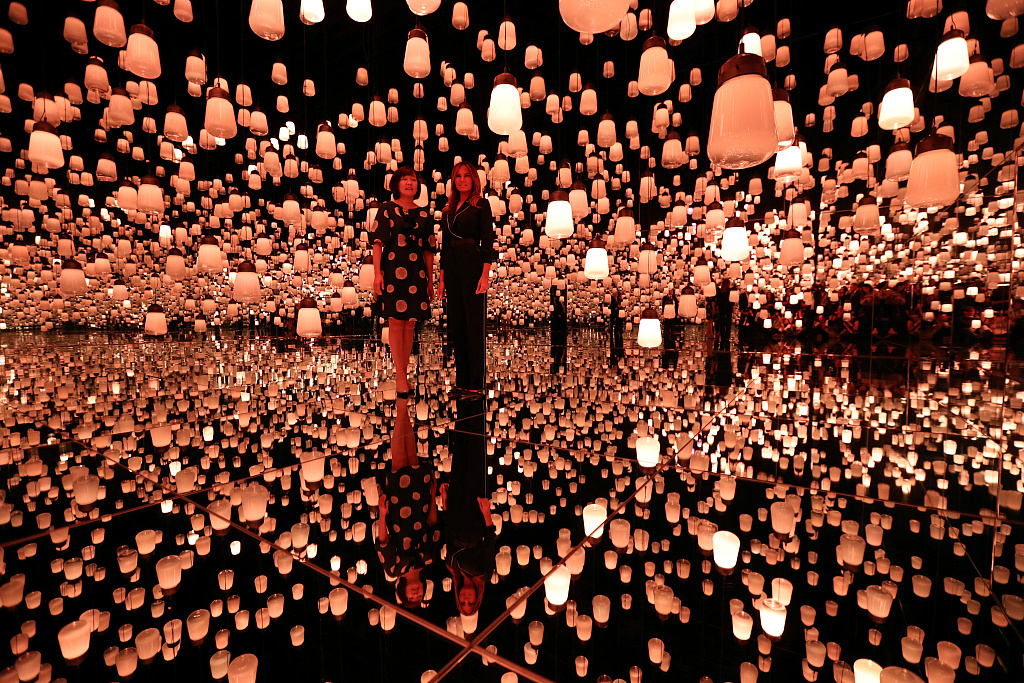
U.S. first lady Melania Trump and Akie Abe, wife of Japanese Prime Minister Shinzo Abe, tour the teamLab Borderless exhibit at the MORI Building Digital Art Museum in Tokyo, Japan, May 26, 2019. /VCG Photo
teamLab has been leading the way with futuristic exhibits, proving the appeal of immersive experiences worldwide, especially among the millennials and members of Gen Z.
Last year, it established its first permanent museum teamLab Borderless in Tokyo, which welcomed a total of 2.3 million people from more than 160 countries in its first year of operation.
It surpassed the number of attendees at Amsterdam's prestigious Van Gogh Museum (over 2.1 million visitors), making teamLab Borderless Tokyo the most visited single-artist art museum in the world.
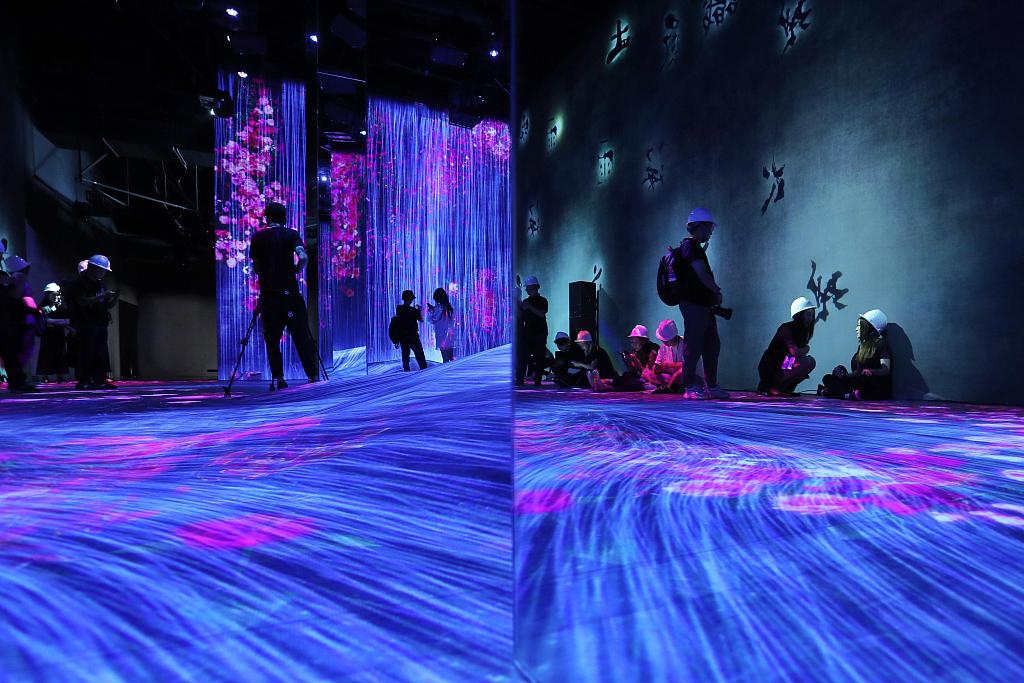
Preparatory work is underway for the inaugural exhibition at the teamLab Borderless Shanghai. /VCG Photo
The innovative art collective introduced their digital artworks worldwide in various countries, including the U.S., France, Australia, Finland, Saudi Arabia and Singapore.
Earlier this year, the Japanese art collective showcased their avant-garde art pieces in Shanghai with a five-month immersive exhibition named "teamLab: Universe of Water Particles in the Tank," drawing about 200,000 visitors.
'A new way for art to be'
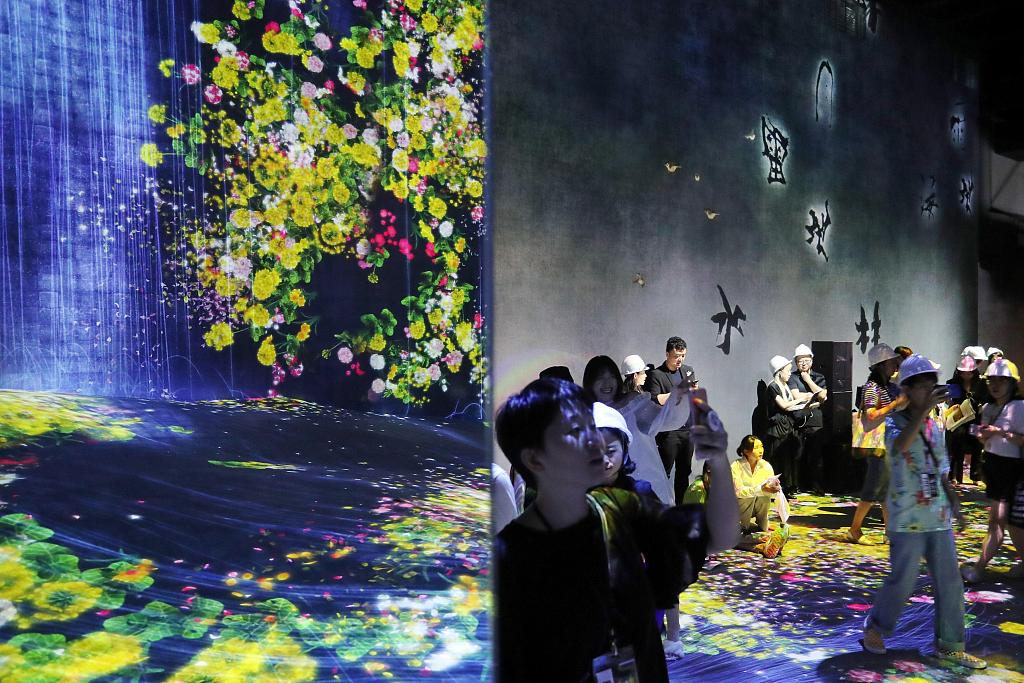
Preparatory work is underway for the inaugural exhibition at the teamLab Borderless Shanghai. /VCG Photo
Founded in 2001 in Japan, teamLab is an interdisciplinary art collective with about 400 members, including artists, programmers, engineers, animators, architects, editors, and mathematicians.
They believe that "the digital domain can expand the capacities of arts, and that the digital art can create new relationships between people."
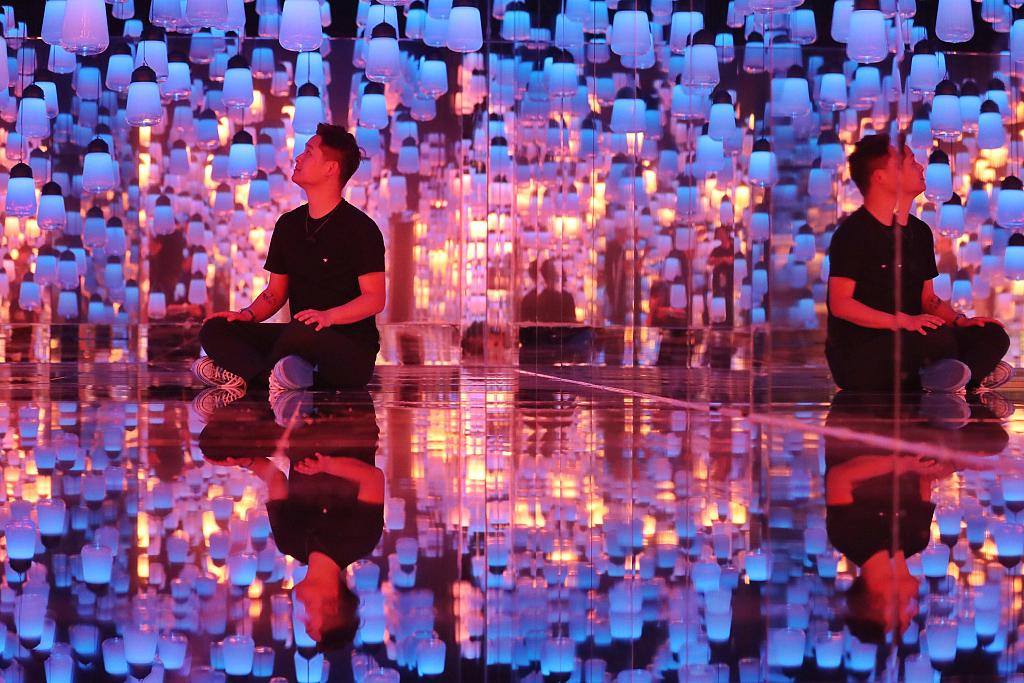
A visitor poses for a photograph at a teamLab's digital art exhibition. /VCG Photo
Rooted in the traditions of Japanese art, their works combine projections, sounds and specially designed spaces, exploring human behavior and relation with the natural world, as well as the societal development in the digital era.
The collective's founder Toshiyuki Inoko told the New York Times Style Magazine in 2016 that they would like to "think about a new way for art to be, not just works of art, but including everything: space, viewers, even the market."

Copyright © 2018 CGTN. Beijing ICP prepared NO.16065310-3
Copyright © 2018 CGTN. Beijing ICP prepared NO.16065310-3